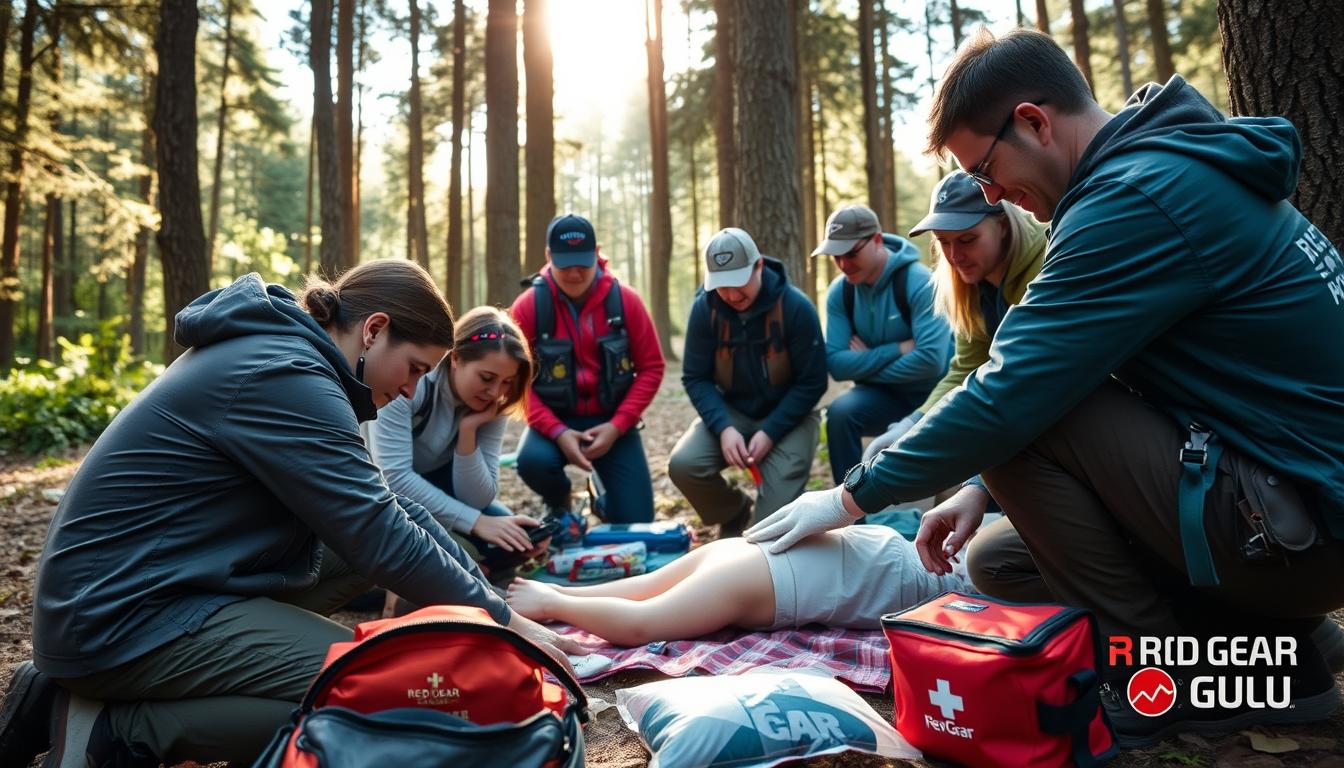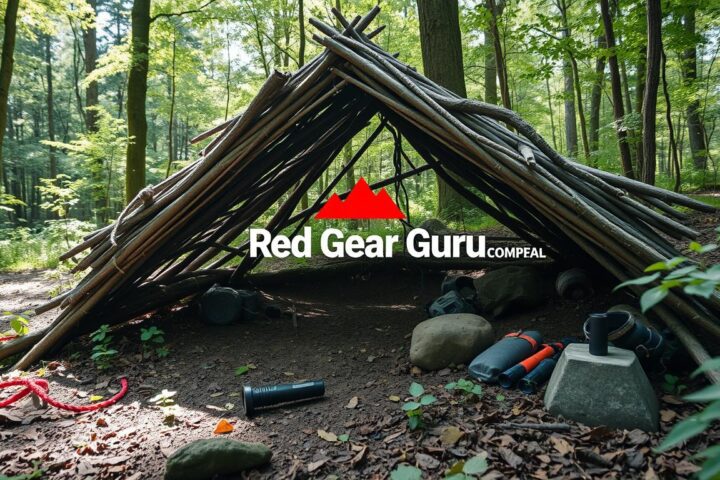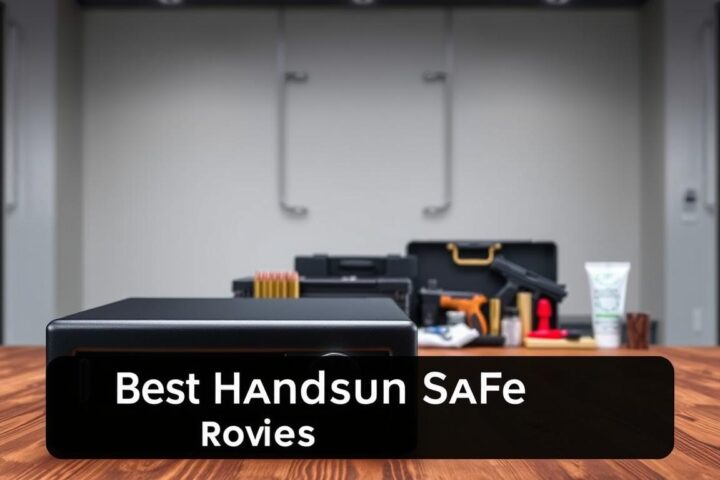Did you know over three hundred thousand people in the United States die from sudden cardiac arrest each year? This shows how important first aid training is. It teaches us lifesaving skills to handle medical emergencies. Emergencies can strike at any time, and being ready can save lives.
Learning CPR and the Heimlich maneuver is easy and doesn’t need a medical degree. This means anyone can help in a crisis. Thanks to groups like the Red Cross and safety courses, learning these skills is easier than ever. This training lets me act quickly and possibly save lives, showing how crucial it is in our daily lives1.
Key Takeaways
- Over 300,000 individuals in the U.S. succumb to sudden cardiac arrest annually, underlining the significance of first aid training.
- CPR can double or triple the chances of survival for someone experiencing a cardiac event.
- Taking safety courses equips me with the confidence to handle emergencies such as choking or severe bleeding.
- Basic first aid techniques can be mastered quickly, often within as little as thirty minutes.
- Immediate response is crucial; for every minute without defibrillation, survival rates decrease dramatically.
- Understanding emergency protocols not only benefits me but also empowers those around me to stay safe.
- Regularly refreshing my skills ensures I’m always prepared for any unexpected medical situations.
Importance of First Aid Training
First aid training is key for anyone wanting to handle medical emergencies well. Knowing how to deal with different emergencies can greatly improve survival chances. For example, 350,000 Americans die from Sudden Cardiac Arrest each year. This shows how important it is for people to know how to act quickly2.
Learning how to spot symptoms and act fast is crucial, especially in urgent situations.
Understanding Medical Emergencies
Knowing about medical emergencies helps us stay safe. Deaths from heavy bleeding, choking, and drowning show the need for first aid training. The American Red Cross offers vital programs like CPR and AED training3. These programs teach people how to act in emergencies, which can be a lifesaver.
Immediate Response Can Save Lives
Quick action can stop things from getting worse. Bleeding Control Kits are vital in severe bleeding cases2. Training in using Naloxone for opioid overdoses can save lives quickly2. Knowing how to use an EpiPen for severe allergies also boosts survival chances.
Empowering Community Safety
When more people know first aid, communities become safer. This training helps people spot risks and act when needed. Workers who learn first aid can help their families and friends too4. This knowledge can lead to fewer accidents and better morale everywhere.
Key Life-Saving Techniques to Learn
Learning essential life-saving techniques is key for anyone wanting to help in emergencies. Getting CPR certification and AED skills helps me act fast in heart emergencies. Almost half of sudden cardiac arrests happen outside hospitals, making quick action crucial5.
Knowing CPR can greatly increase survival chances. Also, using an Automated External Defibrillator (AED) with CPR is vital for saving lives6.
Cardiac Arrest: CPR and AED Skills
CPR is used when someone’s heart stops. It’s important to do CPR at 120 compressions per minute to keep blood flowing5. CPR courses teach the basics of CPR and AED use6.
Choking: The Heimlich Maneuver
The Heimlich Maneuver is lifesaving in choking cases, especially for kids. It’s very effective in clearing airway blockages5. With training, I can help clear someone’s airway quickly.
Recognizing Stroke Symptoms
Knowing how to spot stroke symptoms is vital. The F.A.S.T. method helps me quickly identify them. Acting fast can save lives.

Learning these skills through CPR and first aid training prepares me for emergencies. It helps me contribute to community safety.
First Aid Training for Severe Injuries
First aid training is key for handling severe injuries. Emergencies can pop up anytime. It’s important to know how to deal with severe bleeding, burns, and allergic reactions. This knowledge can save lives.
Controlling Severe Bleeding
Severe bleeding needs quick action. Blood loss can be fatal in under 5 minutes7. Learning to apply pressure and use tourniquets is crucial. Programs like STOP THE BLEED® teach these skills easily8.
Managing Burns Effectively
Burns need fast and right care to avoid problems. Knowing how to treat burns can ease pain and prevent infection. First aid teaches us how to handle burns well.
Handling Severe Allergic Reactions
Dealing with severe allergic reactions is part of injury management. It’s vital to know how to spot and treat anaphylaxis. Using an EpiPen can save lives in emergencies. Training helps us feel ready for any situation.
Learning these skills can make our communities safer. There are many resources, like survival skills training, to learn these important techniques. You can find basic first aid skills here78.
Emergency Preparedness Through Training
Being ready for emergencies is key to staying safe. Training teaches us how to handle different situations. It includes learning wilderness survival skills and how to deal with injuries while outdoors.
Knowing what to do in unexpected events like natural disasters or medical emergencies is also crucial. The American Red Cross offers training online or in person. This helps people and communities get ready for emergencies effectively9.
Developing Wilderness Survival Skills
Survival skills are essential for outdoor emergencies. Knowing how to make fire, build shelter, and find water can save lives. Adding basic first aid to these skills helps us face unexpected outdoor challenges.
It’s important to practice and prepare for these skills. Luckily, there are many resources to learn them, like online courses. These courses highlight the value of wilderness survival skills and training9.
Preparing for Unpredictable Events
Training for the unexpected makes us safer and strengthens our communities. First aid training covers emergencies like medical crises or disasters. FEMA has courses to improve how we respond to emergencies and help communities prepare10.
Those who take these courses can help others during emergencies. This builds a culture of safety and readiness11.
How to Find First Aid Training Courses
Finding the right first aid training is key for learning life-saving skills. There are many options, like online and in-person classes. These fit different learning styles and schedules.
Online vs. In-Person Training Options
Online training lets you learn at your own pace, perfect for busy people. It covers many first aid topics. For example, the American Red Cross offers 100% online CPR and first aid courses. You can access them on mobile devices, making learning easy anytime, anywhere12.
In-person training focuses on hands-on practice. It’s great for getting real experience with an instructor guiding you.
Certification and Recertification Processes
Most courses end with a certification, proving you’ve learned the skills. For instance, the National CPR Foundation’s certification costs just $12.95 and lasts two years. You can download your certificate or get a physical copy with a wallet card13. You can try the exam as many times as needed to pass.
Many courses need you to recertify every two years. This keeps your skills sharp and ready for emergencies.
Conclusion
First aid training is a key investment in personal safety and community well-being. It teaches me how to act in emergencies, which can save lives14. By learning fast and using the right techniques, I help create a safer community for all14.
Also, first aid training helps prevent serious injuries, especially in dangerous places15. Online courses let me learn at my own speed, covering important topics like CPR and emergency response15. This makes my workplace safer for everyone15.
As I grow in these skills, I become a big help to my community, making it safer for everyone16. By choosing to learn first aid, I gain valuable skills and help make our community safer141516. Being ready for emergencies means I can help others when they need it most.
FAQ
Why is first aid training important?
First aid training is key because it teaches us how to handle medical emergencies. It lets us act quickly and save lives. This makes our community safer.
What life-saving techniques should I learn?
You should learn CPR, how to use an AED, and the Heimlich Maneuver. Also, knowing how to spot stroke symptoms is crucial. These skills help in many emergency situations.
How does first aid training contribute to community safety?
More people knowing first aid makes our community safer. It helps us spot and fix risks. This teamwork can save more lives in emergencies.
What should I do if I encounter a severe injury?
Use your first aid training to manage severe bleeding and burns. Also, know how to handle severe allergic reactions. These steps can be very important.
How can I prepare for emergencies in the wilderness?
Learning wilderness survival skills is essential. This includes knowing how to handle injuries or accidents outdoors. Also, understanding safety and navigation is key for emergency readiness.
What are my options for first aid training courses?
You can choose from online courses for flexibility or in-person classes for hands-on learning. Pick what works best for your schedule and learning style.
How often do I need to refresh my first aid skills?
Refresh your first aid skills every two years. This keeps you confident and ready to handle emergencies. Being up-to-date is crucial for effective response.
















